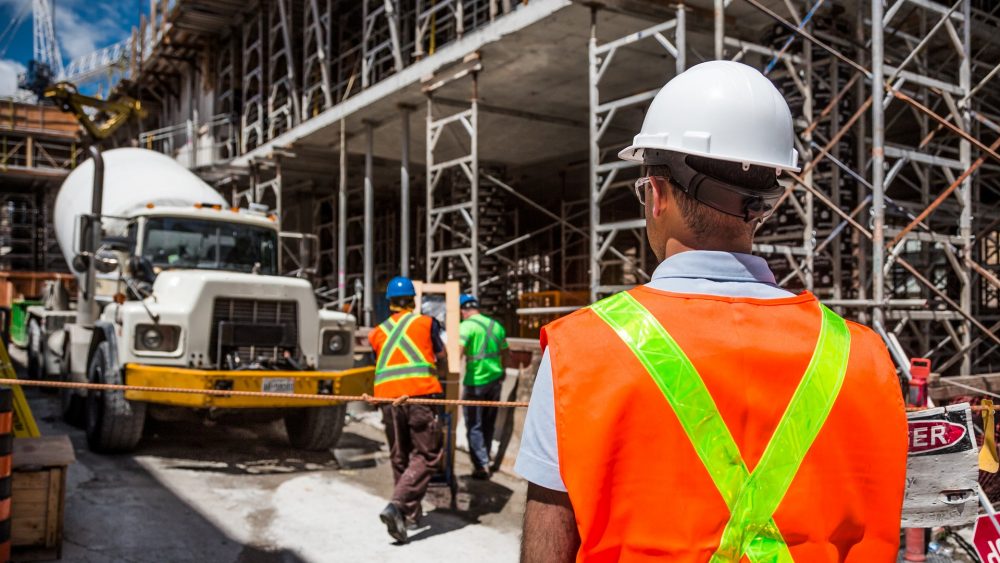When a person is hired, or promoted to the position of a supervisor, it usually means a pay raise. But it also means more responsibilities, including legal responsibilities relating to the health and safety of the workers under your supervision.
A supervisor must play a lot of different roles, often at the same time.
Supervisors play a key role in ensuring the job gets done on time, on budget and safely. Supervisors know that construction can be a dangerous industry to work in. They work with tools, equipment and vehicles that require special training and consideration, and you work in environments that call for tradespeople to be constantly aware of the actual and potential hazards to the health and safety of the project in question.
The Occupational Health and Safety Act (OHSA) is very clear about the different roles of the employer, supervisor and worker, and how those roles cooperate to make a safe and healthy workplace. This is the Internal Responsibility System, or IRS as it’s commonly known.
Communication is a big part of the IRS in any workplace, and the ability to communicate effectively is an important skill for any supervisor. To communicate effectively, you need to be good at both listening and speaking. You need to be a leader as well as a supervisor. A leader adds to the supervisor’s basic role of overseeing the work by listening to the workers, trying to understand their point of view, supporting them when they need help, and always setting a good example.
As the person in the highest leadership position, the employer has the most important role in creating an effective Internal Responsibility System in the workplace. You need the support of the employer to carry out your supervisor duties, and the workers need to know that their supervisor and employer will listen to their concerns and work with them to recognize, assess and control hazards. In fact, the OHSA says workers have the legal right to expect that support.
You should inform the employer of any health and safety concern, even if you have the ability and authority to handle it yourself. Your employer may need to know about the problem in order to fulfill his or her duties. The OHSA says it’s the employer’s duty to appoint a “competent person” as a supervisor. To be a competent supervisor under the OHSA, you must:
1. Have knowledge, training and experience to organize work for your workers
2. Be familiar with the OHSA and the regulations that apply to the work you are supervising,
3. Have knowledge of any potential or actual danger to health or safety in the workplace.
4. Make sure workers and supervisors know about hazards in the work they do and provide them with information, instruction and supervision to protect their health and safety.
- Take steps to eliminate hazards in the workplace, and where elimination is not possible, to control them.
- Make sure workers use and wear protective equipment, material and devices where required by the Regulations
- Do everything reasonable in the circumstances to protect workers from being hurt or getting a work-related illness.
With the ever-growing responsibilities associated with this particular role it is not surprising that the supervisor has become an unintended target for the Ministry of Labour inspectors to become more and more liable to all activities at a workplace. As you search through many activities of fines and to some extent criminal prosecutions of supervisors in the news, ministry websites and many safety-oriented websites such as OHSInsider, you might start to think are the supervisors properly trained to fulfill their requirements and responsibilities? Want to avoid liability for occupational health and safety violations? It’s simple. All you have to do is obey every law 100% of the time. What? You’re not perfect? Don’t fret. You have another option. It’s called due diligence. Just show that you took all reasonable precautions to follow the laws and protect workers and you won’t be held liable for the OHS violations you commit.
Due Diligence as Your Defence
Merriam-Webster defines due diligence as follows: the care that a reasonable person exercises to avoid harm to other persons or their property. But making the due diligence case has gotten progressively harder. “Losers” usually outnumber “winners” about 10 to 1. So, what can we do to aid in the protection of supervisors in their defence vs safety infractions that they may or may not be responsible?
What are the necessary steps should a supervisor take to ensure that when he intends to do everything reasonable in the circumstances to protect workers?
There are two types of due diligence defences:
- Reasonable efforts. The most commonly used type of due diligence defence—and the simplest to prove—requires a defendant to demonstrate that it made all reasonable efforts to protect workers’ health and safety, ensure compliance with OHS laws and prevent the offence.
- Reasonable mistake of fact. The second type of due diligence defence requires a defendant to prove that it reasonably relied on a set of facts that turned out to be untrue but had they been true would have made what it did (or didn’t do) legal. The so-called “reasonable mistake of fact” defence is harder to prove and gets raised less often than the reasonable efforts branch of due diligence.
Additional Considerations
Providing general, generic safety training isn’t enough, laws require companies to train workers on the hazards specific to their workplace, including the machinery, equipment and hazardous substances they actually use. Failing to provide hazard-specific training is sure to undermine the company’s due diligence defence.
You can’t assume that workers will always follow the company’s safety rules and procedures even if they’ve been trained to do so. You must also take into account worker error and consider what would happen if workers don’t follow safety rules, either intentionally or inadvertently.
Having safety rules and procedures and training workers on them is just step one. You must also discipline workers who violate them. The company’s record in enforcing its safety rules through discipline is especially critical when a worker’s infraction was the cause of the company’s safety violation, such as where the company is charged with a machine safety violation as a result of a worker’s deliberate failure to follow the company’s lockout procedures.
Having up-to-date, written safety rules for the workplace won’t help your company prove due diligence unless it clearly communicates those rules to workers.
In many ways, supervisors are the company’s due diligence point men. After all, they’re on the front lines and so are in the best position to identify and address safety hazards, ensure that workers comply with safety rules, etc. Thus, effective supervisors can help a company prove that it exercised due diligence. Conversely, incompetent supervisors can kill its due diligence defence. Competency starts with training. Supervisors need even more safety training than workers and should cover the specific work done by the workers being supervised. A supervisor won’t be able to ensure the safety of workers if he has no knowledge or understanding of the work and its hazards.
Companies have a duty to take reasonable steps to protect workers from foreseeable hazards. When a safety incident occurs, the company is on notice that such incidents can happen and thus must implement appropriate safety measures. But if you don’t conduct a proper investigation of the incident, you won’t be able to address its root cause.
One seemingly minor trap could completely undermine all your efforts—failing to document the steps the company took to protect workers and ensure compliance with OHS laws. In an OHS prosecution, the company must be able to prove that it exercised due diligence. Document everything, such as safety training, safety rules and procedures, the results of incident investigations and so on. And make sure that you can quickly retrieve this information. For example, you may be able to head off charges of inadequate training if you can show the inspector your training records on the spot. One great tool that supervisors and companies aught to establish is a daily log of activities. Although IHSA’s Supervisor Log Book (available through IHSA’s website although out of stock at moment of publishing) is a starting point, there additional methods of creating such logs. One method used by a site supervisor here in Ottawa, Ontario was to collaborate many different versions of logs from many resources and create an easy to use excel spreadsheet and backed up onto his personal OneDrive cloud.
Which method or purchase you decide as a supervisor to use, it is high time that this province (Ontario) should institute a formal supervisor training and accreditation system to protect those who are given the responsibility to protect all workers. It should be noted that present day supervisor courses whether IHSA’s one day course or WSPS’s two-day course has been completely ineffective in the preparation of one who must “Do everything reasonable in the circumstances to protect workers”. Knowledge, experience and training in today’s industry is not sufficient to completely protect and prepare anyone who takes on this role. Let’s begin by exercising our due diligence to safeguard these men and women’s dedication to their craft.



Comments are closed.